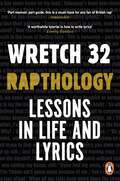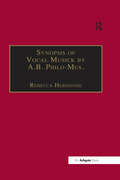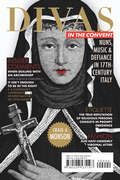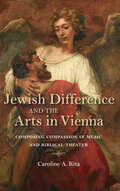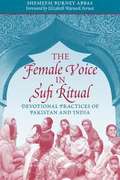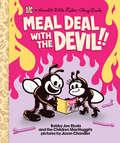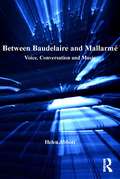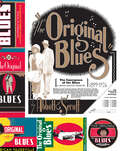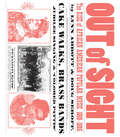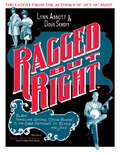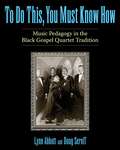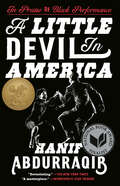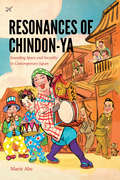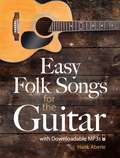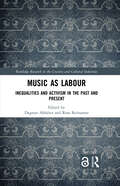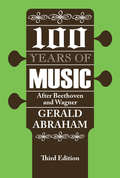- Table View
- List View
إدارة الطلب على المياه
by إليسار بارودي - عبد الرافع عبد لحلو - بيومي عطيةتمثل الأراضي القاحلة وشبه القاحلة 85 % من إجمالي مساحة منطقة الشرق الأوسط وشمال أفريقيا ويعيش فيها حوالي 60 % من سكانها. وتفرض الموارد المائية المحدودة شرطا قاسيا على التقدم الاقتصادي و الاجتماعي لسكان تلك الأراضي فتمثل بذلك اختبارا مستمرا لقدرتهم على التكيف وتهدد سبل عيشهم. وبالإضافة إلى ضآلة معدلات الأمطار السنوية وعدم إمكانية التنبؤ بها فإن المنطقة تتعرض لموجات متكررة وشديدة من الجفاف. وتتناقص المياه السطحية المتاحة ويتزايد السحب من الخزان الجوفي بمعدلات تتجاوز المعدلات الطبيعية لإعادة شحنه بالمياه الأمر الذي يؤدي إلى انخفاض مستوى الماء الأرضي وزيادة ملوحة المياه الجوفية وتواصل التدهور البيئي. وبالمثل تنخفض جودة المياه مع تصريف كميات أكبر من مياه الصرف غير المعالجة في مجاري المياه العذبة أو على الأرض حيث ينتهي بها المسار إلى الطبقة الحاملة للمياه الجوفية
خزانة الأدب وغاية الأرب
by تقي الدين أبي بكر علي بن عبد الله الحموي الأزراريالكتاب يتناول تاريخ الأدب في عصر المماليك ويعد لذلك من الكتب التي لا غنى عنها للباحثين في الأدب إذ ضمنه كثيراً من نماذج شعراء عصره وقدم تصويراً دقيقاً للحياة الأدبية آنذاك ولعل هذا الكتاب يعد من أبرز ما ألف .
متممة الأجرومية
by أبي عبد الله محمد بن محمد بن عبد الرحمن الحطاب الرُّعينيالمتممة الأجرومية من أكثر المختصرات فائدة في النحو اختصر فيه الرعيني أكثر أبواب الألفية وجعله مقدمة للمطولات في النحو
إعراب لامية الشنفرى
by أبو البقاء محب الدين عبدالله بن أبي عبدالله الحسين بن أبي البقاء عبدالله بن الحسين العكبرييناقش ابن هشام في كتابه "اعتراض الشرط على الشرط" بعض المسائل اللغوية الهامة المتعلقة بمسألة اعتراض الشرط على الشرط
Rapthology: Lessons in Life and Lyrics
by Jermaine Scott 32'Groundbreaking... Part memoir, part guide, this is a must-have.' Independent'A worthwhile tutorial.' Evening Standard"Poetry and rap come from the same family. They're brothers. Just because you're good at one doesn't necessarily mean you'll be good at the other, but if you master both you'll be unparalleled."Rapthology is a masterclass in lyric writing. A spotlight into the craft and skill of what it takes to be an incredible artist by pioneering musician and artist, Wretch 32. Taking us through the songs which have shaped his career over the last two decades step by step, explaining what each song means to him, his own creative process, from the first flashes of inspiration to final edits and improvisation, right through to how popular and powerful his lyrics are.Part autobiography, part guide to creativity and part cultural history Rapthology is a blueprint to the music that matters.
5 Seconds of Summer Book of Stuff
by 5 Seconds of SummerTo the very raucous 5SOSfam--wanna find out what the band's been up to over the last year? <P><P>Jam-packed with their own photos, anecdotes of life on and off the road, and much more, the only official 5 Seconds of Summer book out this year means now you can . . .Luke, Michael, Calum, and Ash are having a mad year: a world tour, writing their new album, signing up their first band on their own record label, breaking the internet--it's been eventful to say the least. The good news is they want to share it all with you!This book is a special thanks for (officially) being the best fan army around!
Hey, Let's Make a Band!
by 5 Seconds of SummerHi everyone,This book is pretty much our official story so far. It really does seem only like last week we played our first gig at the Annandale Hotel in Sydney. Since then we've been given the opportunity to turn into the people and musicians we wanted to be.The people who gave us the opportunity were the fans. So this book is like a thank-you. We want everyone to know the story of how four western Sydney teenagers picked up their instruments and dreamed of being one of the biggest bands in the world. There are also some embarrassing photos of us derping around and some facts that some of us didn't even know. So we hope you enjoy it!Love, cal, luke, ash, and mike x
Synopsis of Vocal Musick by A.B. Philo-Mus.
by A. B. Philo-mus.Synopsis of Vocal Musick, by the unidentified A.B., was published in London in 1680 and appears to have only ever had one edition. Its relatively short shelf-life belies its importance to the history of early British music theory. Unlike other English theoretical writings of the period, the Synopsis derives many of its aspects from the continental theoretical tradition, including the first references in English theory to the modern fractional time signatures that had been invented in Italy in the mid-seventeenth century, the first references in English to compound time and the first explanations of tempo terms such as Adagio and Presto. In these respects the treatise forms an important link between English and continental theoretical traditions and may have encouraged the adoption of Italian principles which became a common feature of English writings by the early eighteenth century. The treatise is essentially in two parts. The first section of the book comprises rudimentary instruction on understanding notation and intervals, descriptions of common vocal ornaments and instruction in the process of learning to sing. The second part consists of a selection of psalms, songs and catches which are provided as exercises for the singer, though several of them require a reasonably advanced degree of skill. These pieces provide valuable insight into the way both sacred and secular music might have been performed by amateur musicians in the Restoration period. They include 14 rare English madrigal settings by the Italian composer Gastoldi - further evidence of the Italian influence which pervades the text. This is the first modern edition of the Synopsis, and indeed the first edition to appear since its original publication.
Divas in the Convent: Nuns, Music, and Defiance in Seventeenth-Century Italy
by Craig A. MonsonWhen eight-year-old Lucrezia Orsina Vizzana (1590OCo1662) entered one of the preeminent convents in Bologna in 1598, she had no idea what cloistered life had in store for her. Thanks to clandestine instruction from a local "maestro di cappella"OCoand despite the church hierarchyOCOs vehement opposition to all convent musicOCoVizzana became the star of the convent, composing works so thoroughly modern and expressive that a recent critic described them as OC historical treasures. OCO But at the very moment when VizzanaOCOs works appeared in 1623OCoshe would be the only Bolognese nun ever to publish her musicOCoextraordinary troubles beset her and her fellow nuns, as episcopal authorities arrived to investigate anonymous allegations of sisterly improprieties with male members of their order. aaaaaaaaaaa Craig A. Monson retells the story of Vizzana and the nuns of Santa Cristina to elucidate the role that music played in the lives of these cloistered women. Gifted singers, instrumentalists, and composers, these nuns used music not only to forge links with the community beyond convent walls, but also to challenge and circumvent ecclesiastical authority. Monson explains how the sisters of Santa CristinaOCorefusing to accept what the church hierarchy called GodOCOs will and what the nuns perceived as a besmirching of their honorOCofought back with words and music, and when these proved futile, with bricks, roof tiles, and stones. These women defied one Bolognese archbishop after another, cardinals in Rome, and even the pope himself, until threats of excommunication and abandonment by their families brought them to their knees twenty-five years later. By then, Santa CristinaOCOs imaginative but frail composer literally had been driven mad by the conflict. aaaaaaaaaaa MonsonOCOs fascinating narrative relies heavily on the words of its various protagonists, on both sides of the cloister wall, who emerge vividly as imaginative, independent-minded, and not always sympathetic figures. In restoring the musically gifted Lucrezia Orsina Vizzana to history, Monson introduces readers to the full range of captivating characters who played their parts in seventeenth-century convent life. a
Jewish Difference and the Arts in Vienna: Composing Compassion in Music and Biblical Theater (German Jewish Cultures)
by Caroline A KitaDuring the mid-19th century, the works of Arthur Schopenhauer and Richard Wagner sparked an impulse toward German cultural renewal and social change that drew on religious myth, metaphysics, and spiritualism. The only problem was that their works were deeply antisemitic and entangled with claims that Jews were incapable of creating compassionate art. By looking at the works of Jewish composers and writers who contributed to a lively and robust biblical theatre in fin de siècle Vienna, Caroline A. Kita shows how they reimagined myths of the Old Testament to offer new aesthetic and ethical views of compassion. These Jewish artists, including Gustav Mahler, Siegfried Lipiner, Richard Beer-Hofmann, Stefan Zweig, and Arnold Schoenberg, reimagined biblical stories through the lens of the modern Jewish subject to plead for justice and compassion toward the Jewish community. By tracing responses to antisemitic discourses of compassion, Kita reflects on the explicitly and increasingly troubled political and social dynamics at the end of the Habsburg Empire.
The Female Voice in Sufi Ritual: Devotional Practices of Pakistan and India
by Abbas Shemeem BurneyThe female voice plays a more central role in Sufi ritual, especially in the singing of devotional poetry, than in almost any other area of Muslim culture. This research clarifies why the female voice is so important in Sufi practice and underscores the many contributions of women to Sufism and its rituals.
Meal Deal With the Devil (Punx Ser.)
by Dan AbbotMeal Deal With The Devil combines a five-song EP (including two "story songs") from the devious San Francisco Bay Area musical satirists Bobby Joe Ebola and the Children MacNuggits.<P><P> This read-along storybook, illustrated by Jason Chandler of Horrible Comics, is an adult version of those children's books you used to have with the record that let you know when to turn the page. The Meal Deal ebook will also magically play you three brand new & exclusive Bobby Joe Ebola tracks for bratty little monsters of all ages, as well as a two story song tracks that you can read along with! Chandler's detailed, full-color art brings the MacNuggits' wry, twisted humor to the page, an epic mashup that results in a hilarious carnival ride for the eyes and ears. This mutant offspring of comics and rock from the heroes of the underground is definitely for you, not your kiddos-and it's destined to be the kind of collector's item that won't stay on the shelf!
Between Baudelaire and Mallarmé: Voice, Conversation and Music
by Helen AbbottAs the status of poetry became less and less certain over the course of the nineteenth century, poets such as Baudelaire and Mallarmé began to explore ways to ensure that poetry would not be overtaken by music in the hierarchy of the arts. Helen Abbott examines the verse and prose poetry of these two important poets, together with their critical writings, to address how their attitudes towards the performance practice of poetry influenced the future of both poetry and music. Central to her analysis is the issue of 'voice', a term that remains elusive in spite of its broad application. Acknowledging that voice can be physical, textual and symbolic, Abbott explores the meaning of voice in terms of four categories: (1) rhetoric, specifically the rules governing the deployment of voice in poetry; (2) the human body and its effect on how voice is used in poetry; (3) exchange, that is, the way voices either interact or fail to interact; and (4) music, specifically the question of whether poetry should be sung. Abbott shows how Baudelaire and Mallarmé exploit the complexity and instability of the notion of voice to propose a new aesthetic that situates poetry between conversation and music. Voice thus becomes an important process of interaction and exchange rather than something stable or static; the implications of this for Baudelaire and Mallarmé are profoundly significant, since it maps out the possible future of poetry.
The Original Blues: The Emergence of the Blues in African American Vaudeville (American Made Music Series)
by Lynn Abbott Doug SeroffBlues Book of the Year —Living BluesAssociation of Recorded Sound Collections Awards for Excellence Best Historical Research in Recorded Blues, Gospel, Soul, or R&B–Certificate of Merit (2018)2023 Blues Hall of Fame Inductee - Classic of Blues Literature categoryWith this volume, Lynn Abbott and Doug Seroff complete their groundbreaking trilogy on the development of African American popular music. Fortified by decades of research, the authors bring to life the performers, entrepreneurs, critics, venues, and institutions that were most crucial to the emergence of the blues in black southern vaudeville theaters; the shadowy prehistory and early development of the blues is illuminated, detailed, and given substance.At the end of the nineteenth century, vaudeville began to replace minstrelsy as America’s favorite form of stage entertainment. Segregation necessitated the creation of discrete African American vaudeville theaters. When these venues first gained popularity, ragtime coon songs were the standard fare. Insular black southern theaters provided a safe haven, where coon songs underwent rehabilitation and blues songs suitable for the professional stage were formulated. The process was energized by dynamic interaction between the performers and their racially-exclusive audience.The first blues star of black vaudeville was Butler “String Beans” May, a blackface comedian from Montgomery, Alabama. Before his bizarre, senseless death in 1917, String Beans was recognized as the “blues master piano player of the world.” His musical legacy, elusive and previously unacknowledged, is preserved in the repertoire of country blues singer-guitarists and pianists of the race recording era.While male blues singers remained tethered to the role of blackface comedian, female “coon shouters” acquired a more dignified aura in the emergent persona of the “blues queen.” Ma Rainey, Bessie Smith, and most of their contemporaries came through this portal; while others, such as forgotten blues heroine Ora Criswell and her protégé Trixie Smith, ingeniously reconfigured the blackface mask for their own subversive purposes.In 1921 black vaudeville activity was effectively nationalized by the Theater Owners Booking Association (T.O.B.A.). In collaboration with the emergent race record industry, T.O.B.A. theaters featured touring companies headed by blues queens with records to sell. By this time the blues had moved beyond the confines of entertainment for an exclusively black audience. Small-time black vaudeville became something it had never been before—a gateway to big-time white vaudeville circuits, burlesque wheels, and fancy metropolitan cabarets. While the 1920s was the most glamorous and remunerative period of vaudeville blues, the prior decade was arguably even more creative, having witnessed the emergence, popularization, and early development of the original blues on the African American vaudeville stage.
Out of Sight: The Rise of African American Popular Music, 1889–1895 (American Made Music Series)
by Lynn Abbott Doug SeroffA landmark study, based on thousands of music-related references mined by the authors from a variety of contemporaneous sources, especially African American community newspapers, Out of Sight examines musical personalities, issues, and events in context. It confronts the inescapable marketplace concessions musicians made to the period’s prevailing racist sentiment. It describes the worldwide travels of jubilee singing companies, the plight of the great Black prima donnas, and the evolution of “authentic” African American minstrels. Generously reproducing newspapers and photographs, Out of Sight puts a face on musical activity in the tightly knit Black communities of the day. Drawing on hard-to-access archival sources and song collections, the book is of crucial importance for understanding the roots of ragtime, blues, jazz, and gospel. Essential for comprehending the evolution and dissemination of African American popular music from 1900 to the present, Out of Sight paints a rich picture of musical variety, personalities, issues, and changes during the period that shaped American popular music and culture for the next hundred years.
Ragged but Right: Black Traveling Shows, "Coon Songs," and the Dark Pathway to Blues and Jazz (American Made Music Series)
by Lynn Abbott Doug SeroffThe commercial explosion of ragtime in the early twentieth century created previously unimagined opportunities for black performers. However, every prospect was mitigated by systemic racism. The biggest hits of the ragtime era weren't Scott Joplin's stately piano rags. “Coon songs,” with their ugly name, defined ragtime for the masses, and played a transitional role in the commercial ascendancy of blues and jazz. In Ragged but Right, Lynn Abbott and Doug Seroff investigate black musical comedy productions, sideshow bands, and itinerant tented minstrel shows. Ragtime history is crowned by the “big shows,” the stunning musical comedy successes of Williams and Walker, Bob Cole, and Ernest Hogan. Under the big tent of Tolliver's Smart Set, Ma Rainey, Clara Smith, and others were converted from “coon shouters” to “blues singers.” Throughout the ragtime era and into the era of blues and jazz, circuses and Wild West shows exploited the popular demand for black music and culture, yet segregated and subordinated black performers to the sideshow tent. Not to be confused with their nineteenth-century white predecessors, black, tented minstrel shows such as the Rabbit's Foot and Silas Green from New Orleans provided blues and jazz-heavy vernacular entertainment that black southern audiences identified with and took pride in.
To Do This, You Must Know How: Music Pedagogy in the Black Gospel Quartet Tradition (American Made Music Series)
by Lynn Abbott Doug SeroffTo Do This, You Must Know How traces black vocal music instruction and inspiration from the halls of Fisk University to the mining camps of Birmingham and Bessemer, Alabama, and on to Chicago and New Orleans. In the 1870s, the Original Fisk University Jubilee Singers successfully combined Negro spirituals with formal choral music disciplines and established a permanent bond between spiritual singing and music education. Early in the twentieth century there were countless initiatives in support of black vocal music training conducted on both national and local levels. The surge in black religious quartet singing that occurred in the 1920s owed much to this vocal music education movement. In Bessemer, Alabama, the effect of school music instruction was magnified by the emergence of community-based quartet trainers who translated the spirit and substance of the music education movement for the inhabitants of working-class neighborhoods. These trainers adapted standard musical precepts, traditional folk practices, and popular music conventions to create something new and vital Bessemer's musical values directly influenced the early development of gospel quartet singing in Chicago and New Orleans through the authority of emigrant trainers whose efforts bear witness to the effectiveness of “trickle down” black music education. A cappella gospel quartets remained prominent well into the 1950s, but by the end of the century the close harmony aesthetic had fallen out of practice, and the community-based trainers who were its champions had virtually disappeared, foreshadowing the end of this remarkable musical tradition.
A Little Devil in America: Notes in Praise of Black Performance
by Hanif AbdurraqibAt the March on Washington in 1963, Josephine Baker was fifty-seven years old, well beyond her most prolific days. But in her speech she was in a mood to consider her life, her legacy, her departure from the country she was now triumphantly returning to. “I was a devil in other countries, and I was a little devil in America, too,” she told the crowd. Inspired by these few words, Hanif Abdurraqib has written a profound and lasting reflection on how Black performance is inextricably woven into the fabric of American culture. Each moment in every performance he examines—whether it’s the twenty-seven seconds in “Gimme Shelter” in which Merry Clayton wails the words “rape, murder,” a schoolyard fistfight, a dance marathon, or the instant in a game of spades right after the cards are dealt—has layers of resonance in Black and white cultures, the politics of American empire, and Abdurraqib’s own personal history of love, grief, and performance. <p><p> Abdurraqib writes prose brimming with jubilation and pain, infused with the lyricism and rhythm of the musicians he loves. With care and generosity, he explains the poignancy of performances big and small, each one feeling intensely familiar and vital, both timeless and desperately urgent. Filled with sharp insight, humor, and heart, A Little Devil in America exalts the Black performance that unfolds in specific moments in time and space—from midcentury Paris to the moon, and back down again to a cramped living room in Columbus, Ohio.
They Can't Kill Us Until They Kill Us: Essays
by Hanif Abdurraqib<p>In an age of confusion, fear, and loss, Hanif Willis-Abdurraqib's is a voice that matters. Whether he's attending a Bruce Springsteen concert the day after visiting Michael Brown's grave, or discussing public displays of affection at a Carly Rae Jepsen show, he writes with a poignancy and magnetism that resonates profoundly. <p>In the wake of the nightclub attacks in Paris, he recalls how he sought refuge as a teenager in music, at shows, and wonders whether the next generation of young Muslims will not be afforded that opportunity now. While discussing the everyday threat to the lives of black Americans, Willis-Abdurraqib recounts the first time he was ordered to the ground by police officers: for attempting to enter his own car. <p>In essays that have been published by the New York Times, MTV, and Pitchfork, among others―along with original, previously unreleased essays―Willis-Abdurraqib uses music and culture as a lens through which to view our world, so that we might better understand ourselves, and in so doing proves himself a bellwether for our times.</p>
Resonances of Chindon-ya: Sounding Space and Sociality in Contemporary Japan
by Marié AbeIn this first book-length study of chindon-ya, Marié Abe investigates the intersection of sound, public space, and sociality in contemporary Japan. Chindon-ya, dating back to the 1840s, are ostentatiously costumed street musicians who publicize a business by parading through neighborhood streets. Historically not considered music, but part of the everyday soundscape, this vernacular performing art provides a window into shifting notions of musical labor, the politics of everyday listening and sounding, and street music at social protest in Japan. Against the background of long-term economic downturn, growing social precarity, and the visually and sonically saturated urban streets of Japan, this book examines how this seemingly outdated means of advertisement has recently gained traction as an aesthetic, economic, and political practice after decades of inactivity. Resonances of Chindon-ya challenges Western conceptions of listening that have normalized the way we think about the relationship between sound, space, and listening subjects, and advances a growing body of interdisciplinary scholarship that examines the ways social fragmentation is experienced and negotiated in post-industrial societies.
Talks With Great Composers: Candid Conversations With Brahms, Puccini, Strauss, And Others (Wisdom Library Ser.)
by Arthur M. AbellWho does not ponder what inspires creativity? Why does one person excel as a doctor, another as an artist, and yet a third as a composer? Why do some fortunate people seem overly endowed with an abundance of creativity--this most precious of gifts--and others with little or none at all? Can creative inspiration be nurtured slowly and, suddenly, spring forth to mesmerize and enchant the world?In the words of Emanuel Ax, we are given "fascinating glimpses into the innermost thoughts of some of our greatest composers" in this series of intimate and deeply felt conversations between Arthur Abell and Brahms, Puccini, Strauss, Humperdinck, Bruch, and Grieg. And through these revelations, one can understand with greater clarity the essence of genius.In its entirety, the book is a paean to both the musical world and to those few who achieved greatness during the latter part of the 19th century and the early years of the 20th century. We cannot fail to be deeply impressed by the intense outpouring of emotion demanded by great creative endeavor. And here, nothing is spared. We are privy to the highs and lows--the great triumphs and the wrenching failures.Talks with Great Composers brings to life the thoughts, fears, self-doubt, inherent religiosity, and the unparalleled joys that, by the end of the book, we come to appreciate must accompany all of life's greatest challenges and accomplishments.
Easy Folk Songs for the Guitar with Downloadable MP3s
by Hank AberleThis original collection presents more than 20 popular folk songs that have been specially arranged for beginning guitarists. The timeless melodies are supplemented with a helpful tutorial on guitar basics that offers tips on identifying the strings, tuning, and basic chord patterns and strums.These arrangements of Skip to My Lou, He's Got the Whole World in His Hands, Oh! Susanna, Down in the Valley, Barbara Allen, and other tunes include advice for following the time signatures, strumming patterns, and other suggestions. Best of all, each song features a free MP3 download for students to listen to and play along with. The recordings will familiarize beginning guitarists with the pieces' melodies and tempos, and provide practical guidance for playing these beloved folk songs.
Music as Labour: Inequalities and Activism in the Past and Present (Routledge Research in the Creative and Cultural Industries)
by Dagmar AbfalterThis book brings together research at the intersection of music, cultural industries, management, antiracist politics and gender studies to analyse music as labour, in particular highlighting social inequalities and activism. Providing insights into labour processes and practices, the authors investigate the changing role of manifold actors, institutions and technologies and the corresponding shifts in the valuation and evaluation of music achievements that have shaped the relationship between music, labour, the economy and politics. With research into a variety of geographic regions, chapters shed light on the various ways by which musicians’ work is performed, constructed and managed at different times and show that musicians’ working practices have been marked by precarity, insecurity and short-term contracts long before capitalism invited everybody to ‘be creative’. In doing so, they specifically examine the dynamics in music professions and educational institutions, as well as gatekeepers and mechanisms of inclusion and exclusion. With a specific emphasis on inequalities in the music industries, this book will be essential reading for scholars seeking to understand the collective actions and initiatives that foster participation, inclusion, diversity and fair pay amongst musicians and other workers.
One Hundred Years of Music: After Beethoven and Wagner
by Gerald AbrahamOne Hundred Years of Music provides a full account of the history of music from the death of Beethoven to the modern era. It covers a period of exceptional interest. The last hundred years coincide roughly with the rise and decline of Romanticism, include the various nationalist movements, and extend to the advent of "neo-classicism," the twelve-tone system, and still more modern techniques. Abraham devotes ample space to modernist and avant garde music, in which he explains the difficulties we experience in listening to the work of such composers as Schnberg, Bart k, and Berg. He also throws new light on many more familiar topics.In its earlier editions, One Hundred Years of Music became a standard work on this subject; it has since been brought updated to include coverage of later developments. Abraham approaches his subject as an historian of style rather than an esthetic critic. Rather than pass judgment on particular works or composers, he shows how music has developed, and thus provides a clear and connected history that is more substantial than most books of musical appreciation. An extensive chronology and a full bibliography and index add to the usefulness of the book for students, professionals and musical laymen alike.This third edition incorporates some corrections of fact, further enlarges the bibliography and chronology, and adds commentary on developments in music techniques. In order to correct the historical perspective, the author has included a "prelude" and three "interludes," giving rough sketches of general conditions in the musical world at intervals of thirty years. As the reader's sense of chronology is very apt to get confused when a number of simultaneous streams of development have to be described, the author has inserted the date of composition or performance (both if they are widely separated) of each work at the first mention of it.
Eminem (Hip-Hop Stars)
by Dennis AbramsExplore the controversy surrounding this remarkable hip-hop talent. Born Marshall Mathers III, Eminem overcame a difficult childhood to become the most critically acclaimed white rapper of his time. His albums have sold in the millions. He's won MTV Video Music Awards, Grammy Awards, and even an Oscar. But fame and success have come with a price: His lyrics have been attacked for encouraging violence against women and others. His turbulent personal life has made countless headlines. Some people have called for his music to be banned; others have labeled him a genius. Eminem is a compelling full-color biography that examines the remarkable life of a controversial yet undeniably talented artist who pushed creative envelopes and broke racial boundaries to become one of hip-hop's greatest stars.

